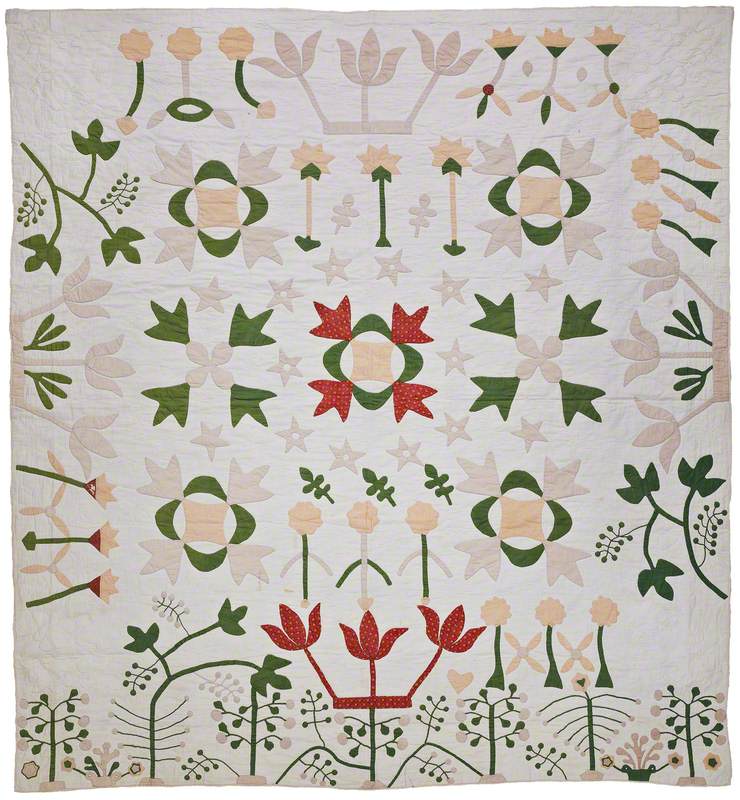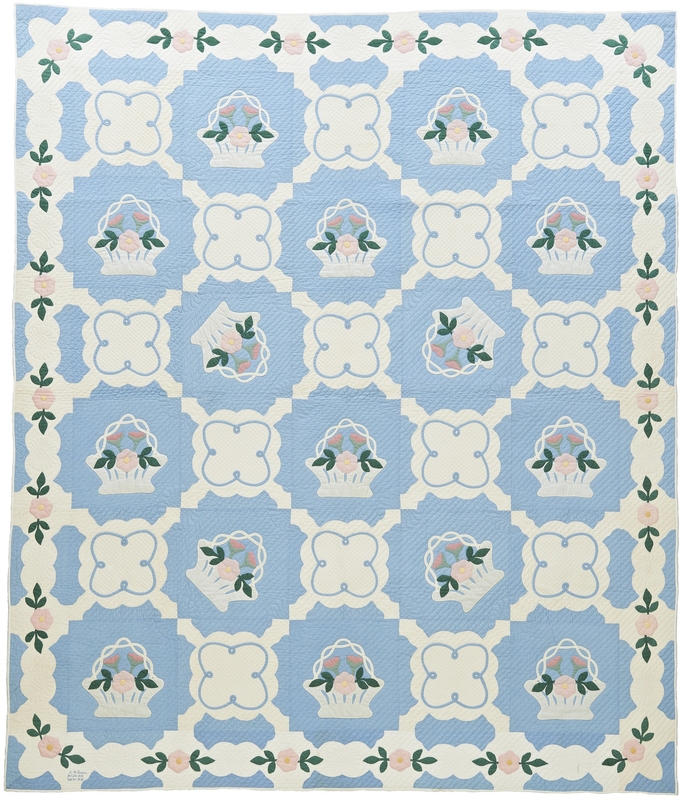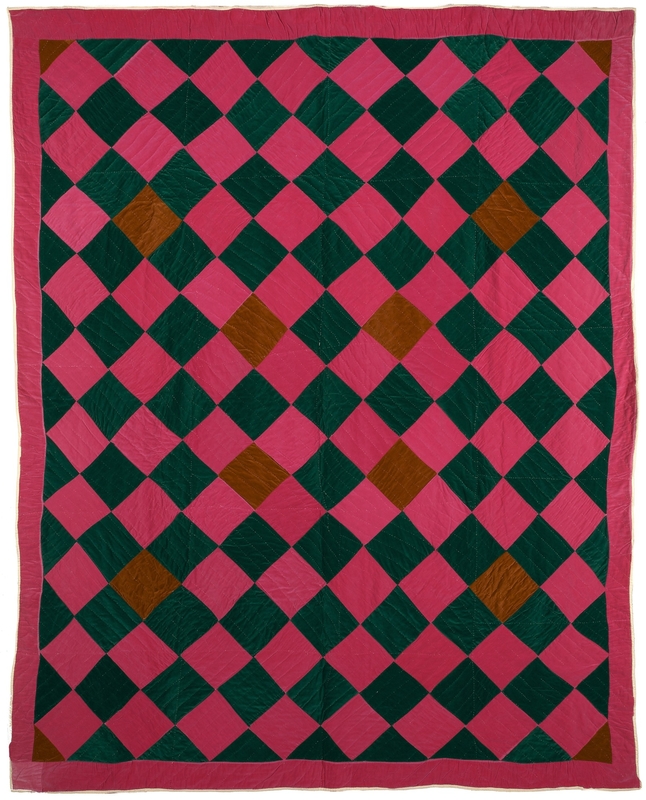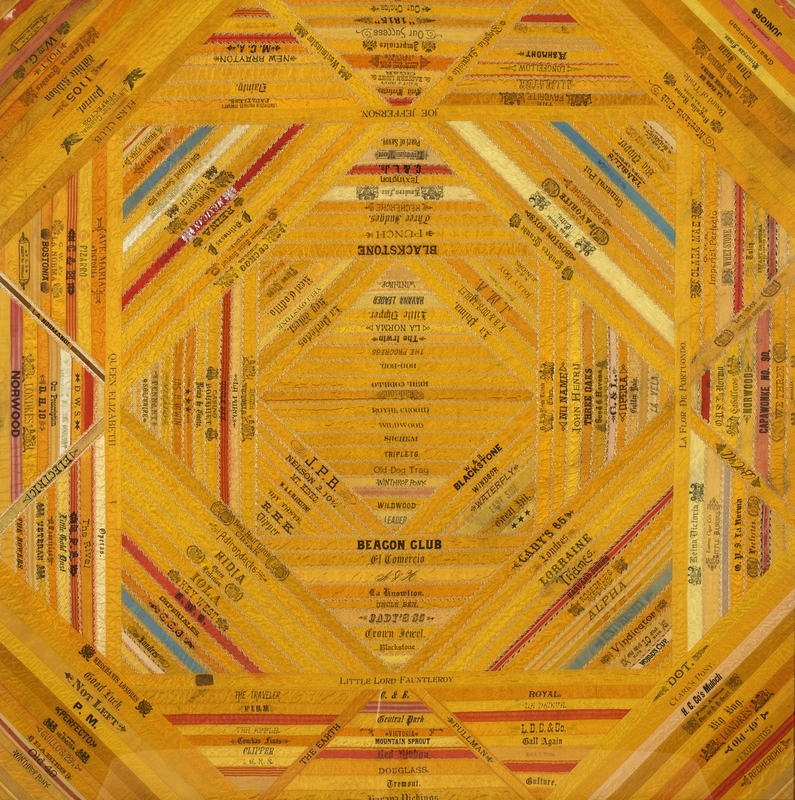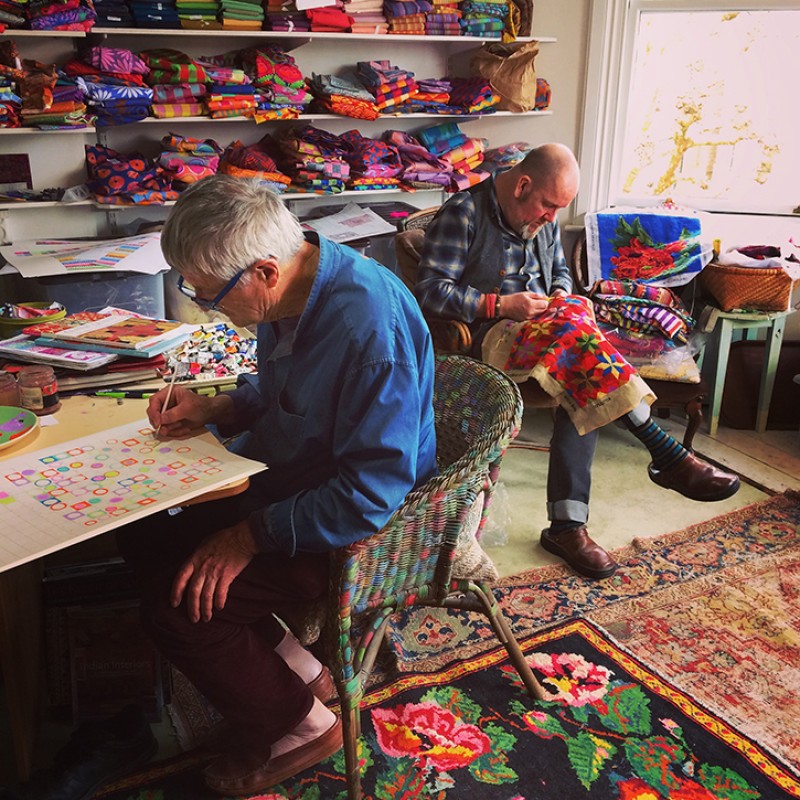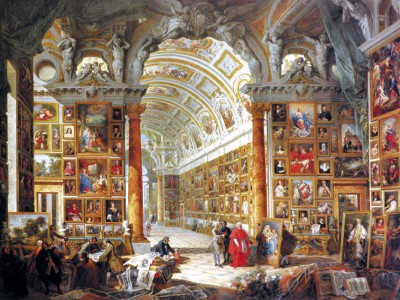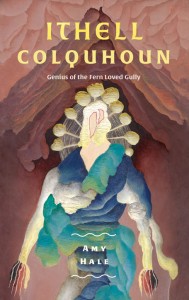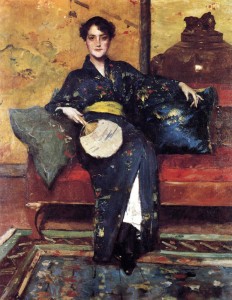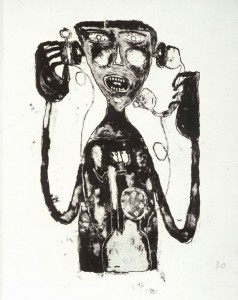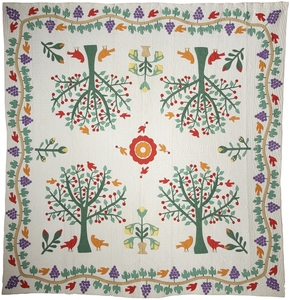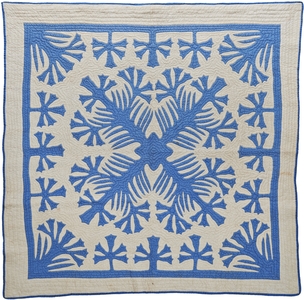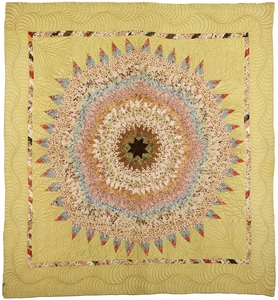The practice of quilting has practical purposes, making clothing or bed covers warmer by stitching multiple layers together. But as well as providing warmth in cold weather, these items are also beautiful. Because of their functional nature and close association with craft, these stunning visual compositions have often been discounted as works of art. But to do so is to undervalue the expression of creativity that these handiworks embody and to ignore a skill that is traditionally associated with women who have no formal training or education.
In the middle of the eighteenth century, a very specific type of quilt was being made in the city of Baltimore, Maryland. Often on a grand scale, these pieces served as showcases for the skills of the needlewomen who made them, with each block featuring a different motif meticulously applied to the fabric backing.
Many of them were also signed or inscribed with lines of verse. Known as Baltimore album quilts, these pieces were inspired by the nineteenth-century fad for collecting autographs from family and friends. The blocks with the red books are a nod to the albums that these signatures were kept in.
It is likely that the designs used in Baltimore album quilts were available as patterns or pre-cut kits that were sold. There is a long tradition of commercially available patterns for quilt designs and it is also possible to trace links between these and other forms of textile art. The cherry tree design in the quilt below – a reinvention of the Tree of Life motif – was popular at the beginning of the twentieth century. Commercial patterns were available for quilts and embroideries. In 1922 the Ladies Home Journal sold a transfer pattern for this quilt design. The quilt-pattern makers Bucilla also produced a kit (albeit a simplified version).
Queen Kapi'olani's Fan Quilt, with its striking contrast between dark appliquéd design and light background, is typical of Hawaiian quilts. The central pattern has been cut from a large piece of fabric, folded and cut to produce a symmetrical design motif – much as you would if you were cutting a snowflake from a piece of paper.
The bold and eye-catching designs of Hawaiian quilts hide a darker history, however, in which the art of quilt-making was used as a tool of colonisation. Missionaries who settled on the islands encouraged native women to undertake quilt-making instead of engaging in traditional ceremonies and dances.
Not all quilts feature elaborate pictorial designs that are appliqued to a backing fabric. Many are composed of geometric shapes that have been stitched together. Although these may, on first glance, appear more simplistic, they are equally complex in their designs, and colours and shapes are carefully placed to achieve different visual effects.
Take the Mosaic Diamonds Quilt, composed of hexagons that have been arranged in diamond shapes. These are separated by rows of hexagons made from plain green fabric. The points at which the green rows intersect are marked with single red hexagons. Reading these red hexagons as central medallions, the diamonds radiating outwards from these junctures form six-pointed stars. From another perspective, the diamonds also form a variation of the Tumbling Blocks pattern, whereby three diamonds form the shape of a three-dimensional cube.
Often the more deceivingly simple designs are those that have more graphic appeal, particularly to a modern eye. Such is the case with quilts made by the isolated African American community at Gees Bend, Alabama. There is a strong tradition of quilt-making within this community. These quilts have a freedom of design about them, with the makers using the materials available to them as the launch point for the design rather than buying fabrics to conform to a predetermined design. The community of Gees Bend found international acclaim in the art world when their work was brought to the stage in the form of national art gallery and museum exhibitions.
Soon large companies wanted to stock them in their stores. In June 1969, sales of the quilts began in Bloomingdale's. These large companies demanded a level of consistency in their products and supplied the quiltmakers of Gees Bend with new materials, ranging from synthetics to Liberty cottons. Working in conjunction with Bloomingdale's, a designer was employed to produce new patterns (some of them based on abstract designs). Many of the quilters felt these new production regulations curbed their creativity. The demand for their quilts was short-lived; the contract with Bloomingdale's ended within a few years.
While many quilt designs can only be achieved through the purchase of fabric specifically for that project, there is also a tradition of using fabric scraps to make quilts. Indeed, even ribbons used for packaging were crafted into elaborate covers for pieces of furniture, particularly during the latter part of the nineteenth century.
During the late 1800s, cigar companies tied bundles of cigars with silk ribbons, which had the name of the company or cigar manufacturer stamped or woven into them. Cigar-smoking was a common activity so most households had a plentiful supply of these ribbons. It was common for women in the household to collect these bright ribbons and sew them together in an early form of upcycling.
Some quilts were made to mark significant events, such as the Victory Quilt. This was made by Mary Earle Webster Downer as a gift for her grandson during the Second World War. The limited colour palette of red, white and blue and bold 'V' shape enhance the patriotic nature of this quilt.
Other quilts made during the Second World War have a less obviously patriotic nature but do highlight the element of care within these pieces that so often bring comfort to the recipients. During the war, the American and Canadian Red Cross Societies organized shipments of quilts to Europe for soldiers and dispossessed people. The Red Cross provided backing and batting to community groups, which used these materials to assemble quilts. Individual groups kept a record of how many quilts they gave to the Red Cross Quilt. One district alone sent over 3,000. Unfortunately, there are no records of the total number of American and Canadian quilts sent to Europe during the war.
Unlike knitted 'Bundles for Britain' items, relief quilts had no prescribed pattern. Many of the quilts produced were of a crazy design, using large scraps of material (usually wool or suit fabric). This enabled the maker to construct a quilt top in a short amount of time. Similarly, quilting was often discarded in favour of the quicker method of tying the layers together. In their eagerness to get quilts to those who needed them as quickly as possible, many quilters pulled out old quilt tops that had never been completed.
At a time when so many of us long to wrap our arms around our loved ones, and for the comfort that contact with others brings, it is all too easy to imagine the comfort that these relief quilts brought to those who received them. Many quilts were made for others – it is not just relief quilts that embody care and love. Each stitch of these beautiful works of art encompasses the love, hopes, and dreams of the maker and is a testament to how cherished the recipient is.
Katherine Hebert, Chief Curator at the American Museum & Gardens





